Text
Why I stay away from Miracle-Gro - and so should you
Why I stay away from Miracle-Gro – and so should you
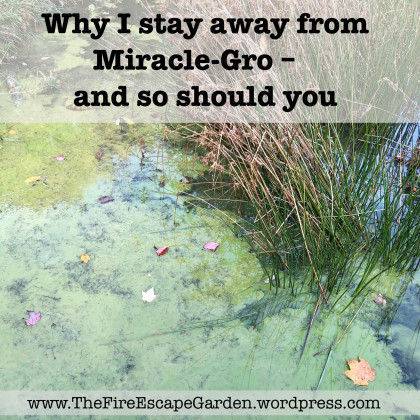
Hello everyone! It’s been a while since my last post: the work-life-garden balance got wrecked once again, and I had to take a break from blogging…
First let me clarify something: I normally only use trademark names of products that I love and use myself, and refrain from calling out the brands I dislike. This post, as you probably noticed, is an exception. It is not about me disliking mineral…
View On WordPress
0 notes
Text
Pickled garlic scapes - my favorite way to eat garlic scapes!
Pickled garlic scapes – my favorite way to eat garlic scapes!

Hi there, fellow garden enthusiasts!
This weekend I was surveying my community garden plot (I try to do it at least once a week, although daily observation is ideal) and lo and behold: I discovered that the garlic scapes were ready to harvest! This came as a bit of surprise, as I was not expecting them for another two weeks or so.
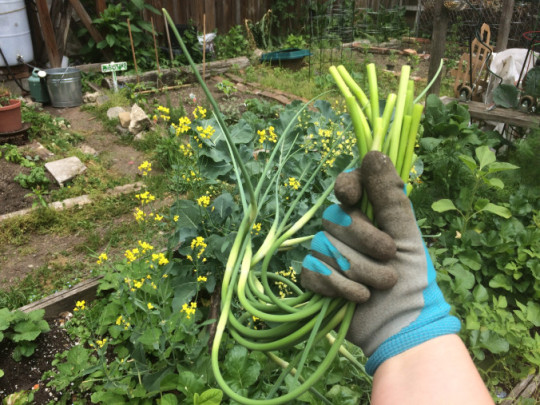
That meant one thing: I would be pickling this weekend. I had…
View On WordPress
0 notes
Text
Confessions of a Mason Bee Keeper
Confessions of a Mason Bee Keeper
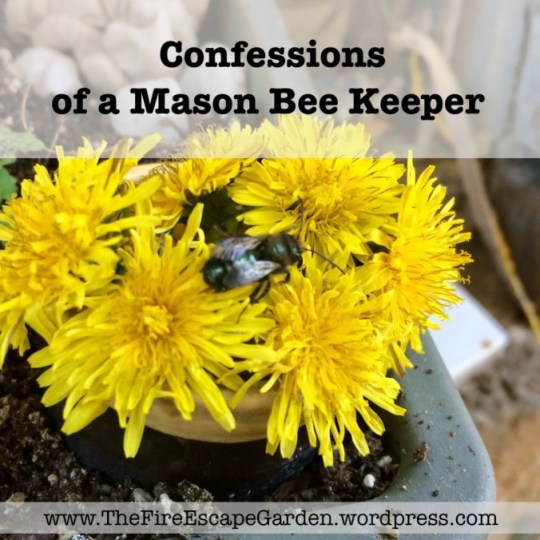
Hi there! As promised in my last post, here is a story behind the solitary bee house I now have on my balcony.
I have been contemplating beekeeping for a while. I mean, the bees are great pollinators, they are in trouble (with the rest of our planet’s insects), and you may get some honey out of it, right? Well, wrong… After weighing all pros and cons, I decided that honeybees will not be…
View On WordPress
0 notes
Text
Welcome! (It's The Fire Escape Garden Tour)
Welcome! (It’s The Fire Escape Garden Tour)

Hi everyone and welcome to May!
It recently dawned on me that I have never posted anything like a “virtual tour” of my fire escape balcony, even though it is the main focus of this blog. So better now than never, this post will take care of that mistake! As always, my intent is to show you the real thing, not the instagram-perfect version of my garden, so you will see occasional empty pots,…
View On WordPress
0 notes
Text
How to test your compost (for persistent herbicides)
How to test your compost (for persistent herbicides)

Hello everyone!
It’s that time of the year again – soil amendment time, and you know what my favorite amendment is, right? It’s compost! Many people are blessed with enough space to have a compost pile in their yard, but even they probably don’t make enough for all their garden needs. One simply can not have too much compost, is my opinion. So we do end up purchasing it from commercial sources,…
View On WordPress
0 notes
Text
Green wall #1 revisited
Green wall #1 revisited
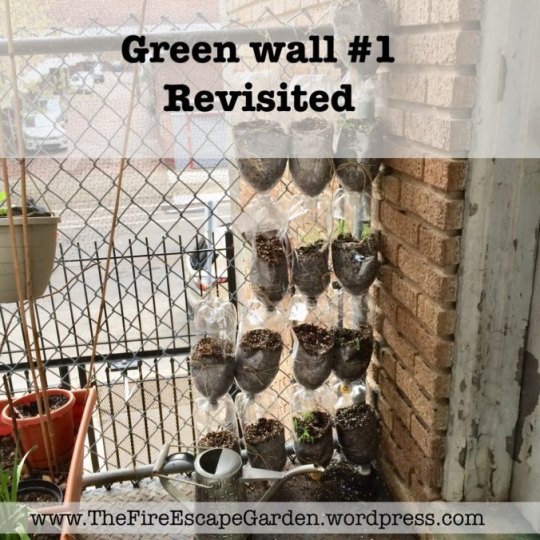
Happy Earth Day, everyone!
Remember my green wall #1? The one made of plastic bottles? Well, it worked quite well, but I never really liked it – the way it looked, I mean. Maybe if I had something with massive foliage, like ferns, to mask the bottles… but I can’t come up with an edible plant that would behave that way. So I decided to make a new green wall.
I chose plastic bottles again, because…
View On WordPress
0 notes
Text
Carrots in bottles? Why not!
Carrots in bottles? Why not!
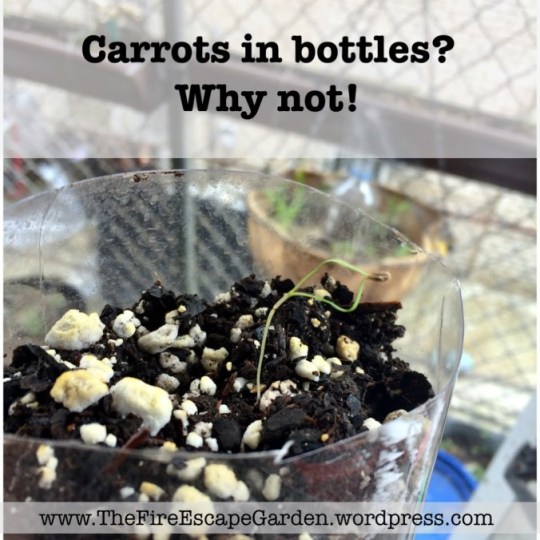
Hi everyone! Yes, you’ve read it right, I am trying to grow carrots in plastic bottles this year. I did not come up with the idea, though. Horti Hugo invented this some time ago and also introduced the #carrotbottles hashtag on twitter. Now, everyone has their own reason for growing carrots in bottles, and here are just a few:
Growing carrots in container requires tall (or deep, however you…
View On WordPress
0 notes
Text
Constructing a tiny wildlife pond in a friends' backyard
Constructing a tiny wildlife pond in a friends’ backyard
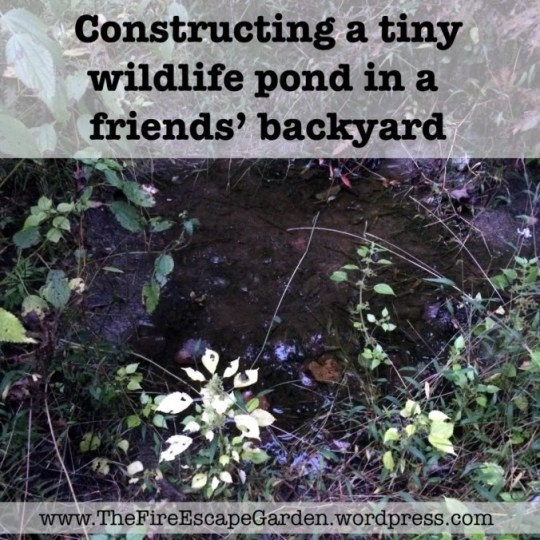
I have the best friends – they let me mess around in their backyard, including this crazy idea with making a wildlife pond! Ever since I was little, I wanted to have a water feature around. I kept digging “ponds” and fountains in my mother’s garden, but they were always demolished, because they were in the way… So this quest of mine of making a wildlife pond is a very long one.
As I grew older,…
View On WordPress
0 notes
Text
Spring worm bin maintenance: they survived winter!
Spring worm bin maintenance: they survived winter!

Hello everyone!
A week ago I decided I am brave enough to remove all winter fortifications and open up the worm bin to see if any of the wigglers made it through the winter. I have been pessimistic, because I kept an eye on the temperature inside the bin, and there were a couple of days when it dipped below 30F. Well, guess what? A bunch of worms survived!
First I opened the lid and, not…
View On WordPress
0 notes
Text
Happy Spring everyone! I can’t believe it’s finally here!
I’m a bit late to the seed-purchasing extravaganza this season, but just in case you are not finished shopping yet, I’d like to share with you where I buy my seeds and why.
Disclaimer: I receive no profits or products from any of the companies mentioned in this post.
I’ve stuck with sustainable gardening for as long as I had a garden of my own, but I never paid much attention to where my seed came from. After all, as long as I grow it sustainably, that’s all that matters – right? Well, it finally dawned on me that the answer is: no…
You may notice that in this post I use the term “sustainable” instead of “organic”. I’d like to explain why. People tend to think that if the product is labeled “organic” it must be produced sustainable. Unfortunately, that is not necessarily the case. USDA regulations allow organic growers to use a whole selection of “natural” pesticides, which are as destructive to the wildlife as synthetic ones. For example, permethrin is a plant-derived organic pesticide. It is very efficient, yet non-discriminate, and kills bees, amphibians and other precious wildlife along with any pest insects. So as with everything else, conscious consumerism is a must. Now that I’ve said this, let’s get back to the seed production issues.
Of course, even if you use conventionally produced seed, but grow it organically, the resulting product will indeed be clean of pesticides, and you won’t contaminate your garden with synthetic fertilizers in the process. However, those seeds we purchase, they come from plants, too. So if I buy conventional seed, it means it has been grown on a conventional farm, which did harm the environment through the use of synthetic fertilizers, pesticides and the like. And thus, I myself contributed to those practices.
On the other hand, when I purchase organic seed, I support the farmer that uses gardening practices I believe in. An added bonus: organic seed suppliers often have better variety than conventional seed suppliers and provide more information on how to best grow those plants. And besides, these days organic seed costs are so close to conventional, you can barely call it an investment anymore!
So, here are my favorite seed suppliers.
Botanical Interests are my go-to source of seed, and I’ve been using their products for 10 years, which is as long as I’ve lived in the US. They offer a variety of heirloom and F1 hybrid seeds, many of which grown organically. I particularly like the diversity of their catalog: for example, back in Russia, Yarrow is only considered a wildflower and I doubt you can actually buy seed. Yet this year I am trying the Colorado Blend Yarrow Seeds, offering several colors, not just the wild white variety!
Over the years I have tried a number of varieties from Botanical Interests, always with great success, and this year I am trying the “Made in the Shade Flower mix” – very exciting, because my balcony garden is mostly shady, but I want flowers there, too!
The family-owned company was established in 1995 and is based in Broomfield, CO. I have reached out to Botanical Interests to ask some questions about their practices, and they put me in touch with April Shelhon, their marketing horticulturalist. I was particularly interested in where the seed comes from, and here is what April told me: “Like most seed companies we do buy from suppliers and direct from growers. We do a lot of research to make sure those suppliers and growers are not affiliated with GMO companies […,] and in July 2018 all of our seed is officially verified by the Non-GMO Project.”
The company’s main goal is “supplying locally-owned garden centers with quality products that gave good, simple instructions to gardeners”, and in my humble opinion, this is exactly what they do. As you can see in the pictures, the seed packets are not only beautifully illustrated, but provide detailed growing instructions. Not all the seed sold by Botanical Interests is certified organic, but it is always stated clearly on the packet.
Renee’s Garden is another wonderful US-based seed supplier. They offer a variety of heirlooms, hybrid and certified organic seed, as well as some roots and tubers. Founded by Renee Shepherd in 1985, it is proud to call itself “a company run by gardeners, for gardeners”. In my mind Renee’s Garden and Botanical Interests are interchangeable. I hope this does not offend either one – they are both exceptional! Both companies have the most amazing seed packets with gorgeous illustrations on the front and detailed growing instructions on the back.
Image source: http://www.reneesgarden.com
When I emailed the company with my questions about where the seed comes from, I got a response from Renee herself, and here is what she had to say: “We buy seed from seed producers both large and small literally all over the world. I try to buy my varieties in the country where they are most popular or where they originated. So, for example, I buy a lot of our basil seed from Italian seed producers…… When we decide to carry a variety , we carefully evaluate it in our trial gardens which are in a mild winter climate here in Northern California, and in a very cold winter climate in Middlebury Vermont. Then, I can write the growing instructions based on our own growing experiences. We choose varieties for flavor and easy culture and flowers for form, color and fragrance.”
Not all the seed sold by Renee’s Garden is certified organic, but the entire company holds sustainable agriculture as an integral part of their mission, and they never cell treated or genetically-engineered seed, adhering to the “Safe Seed Pledge” developed by the Council for Responsible Genetics.
Adaptive Seeds is a company I learned about just this winter, so this is my first year

growing their products. However, I was so impressed by their mission, that I just had to share this with you! Their motto is “Bringing biodiversity back”, and all of their seed is grown in the Pacific Northwest and open-pollinated. Adaptive seeds’ goal is to “steward rare, diverse and resilient seed varieties for ecologically-minded farmers, gardeners and seed savers”, and one of my favorite features is that the source of the seed (the actual farm that produced it) is always stated in the variety description, along with a very detailed description of the plant’s features.
A whooping 99% of seed sold by Adaptive Seeds is certified organic, and they provide a complete list of all their seed growers on the About Us page. The final feature that I liked a lot is that any variety can be purchased in a range of sizes from standard to bulk, which is awesome for things like salad greens that you have to keep re-seeding throughout the season. Seriously, you can get a pound (!) of lettuce seed for just $75 (that would be over $500 in standard size seed packets).
I have first heard about Adaptive Seeds from A Way To Garden podcast, and I strongly recommend you listen to that episode, where Margaret Roach (the podcast’s host) interviews Sarah Kleeger, one of the company’s co-founders. I was so inspired by that interview, that this year I am growing two grain varieties – amaranth and quinoa, which I purchased from Adaptive Seeds. Both are frost-tender plants, so you do have to start indoors, and here are my seedlings at the moment:
High Mowing Organic Seeds is another exciting company selling exclusively organic

seed produced in the US. Tom Stearns is a passionate gardener and seed saver, and he started his first company, the Good Seed, in 1996 with just 28 varieties, many of which grew in his backyard. Today, the company sources its huge variety of seeds form independent organic seed farmers, including Tom’s 40 acre farm in northern Vermont.
I have only learned about High Mowing Organic Seeds this winter, and this will be my first season growing their seed. Unfortunately, thanks to my local postal service, my order arrived only a few days ago (3 weeks late), so I can’t share with you any images of thriving sprouts yet. However, I have read and heard so much about the company from many sources I rely on every day, that I absolutely had to tell you about this company, and I am sure it will be one of my favorites from now on! I encourage you to listen to an interview with Tom Stearns in another episode of Margaret Roach’s A Way To Garden podcast, as well as an interview with Joe Lamp’l on the Joe Gardener podcast, where Joe and Tom discuss why it is essential we support our sustainable seed producers. And if you prefer video to audio podcasts, here’s a link to the episode on Growing A Greener World.
As with other seed suppliers in this post, I approached High Mowing Organic Seeds with a few questions about their practices, and received detailed answers from Maggie Highby, the company’s marketing manager. As I mentioned earlier, the majority of their seed comes from about 60 independent farms across the US. Initially, I was concerned to learn that a fraction of seed comes from other sources, sometimes outside of the country, but here is what Maggie told me about this: “We also work with other seed companies who have their own organic breeding and research programs to purchase organic seed they produce through their network of growers. Some of these seed companies work with farmers who grow seed outside of the U.S. This highly diversified sourcing allows us to offer varieties that are widely adapted to a variety of growing conditions, which in turn allows the farmers and gardeners who purchase our seeds to experience success in their individual locations all across the U.S. and Canada. It also gives us the opportunity to offer more certified organic varieties in our seed catalog than if we were only growing seed in a single location or in a handful of locations; as you know, the offerings available for certified organic seed are significantly less than those for conventional seed. It is our goal to bring more high quality organic seed to growers each year we are in business“.
My other concern with organic labeling is “natural” pesticides, and I was relieved to find out that High Mowing Organic Seeds shares my values: “While broad spectrum pesticides can be an effective organic treatment, some of these organic-approved pesticides can still be harmful to the environment and to human health – furthermore, the development of resistance in pests remains a concern whenever we rely heavily upon a single class of pesticide for control. For these reasons, High Mowing’s own growing practices utilize a wide range of holistic management techniques in order to minimize dependency on any single class of inputs, including pesticides. In turn, we encourage our seed farmers to approach organic seed production with a holistic perspective, prioritizing soil health and nurturing the natural symbiotic relationships that exist on organic farms. We work hard to find seed farmers whose values align with our own, and whose growing practices prove to not only produce the healthiest, most vigorous organic seed, but also do so with a deep respect for the land upon which they are growing and for the communities – both human and wild – that are impacted by their work.” Needless to say, the words “seed production with a holistic perspective” just melted my heart!
Garden bloggers and authors. What can be better than purchasing seed form a
Image source: http://yougrowgirl.com
gardener whose work you read and admire? The correct answer is: nothing. I have been a fan of You Grow Girl project for a while, and last summer I found out that Gaya Trail, the genius behind You Grow Girl, also sells seed straight from her own garden! Gayla loves tomatoes, so these are the seeds she offers most varieties of (I’ve counted 21) – all unique and often rare. What I am most excited about with You Grow Girl seeds are all the uncommon greens she offers, like red orach, epazote, purple shiso and garlic chives, that are often hard to find elsewhere. And of course, every seed pack comes with detailed growing instructions.

These are my little garlic chives seedlings. They are a bit stressed now, because I kept them in my hot kitchen for too long and then took them outside without proper hardening off, but I’m sure in a week or so they will be thriving.
So here they are, my favorite seed suppliers as of Spring 2019. Even though I put these companies in an order, there is no sort of first- to fifth-best rating here, the order for me is more historical, if anything, in terms of when I found about and started using each supplier. And even as I am writing this, I keep learning about more seed companies and projects, like Sow True seed and the Seed Savers Exchange that I can’t wait to try and tell you about.

I hope you find this post helpful, and I’d love to hear about your favorite seed sources as well!
My favorite seed suppliers Happy Spring everyone! I can't believe it's finally here! I'm a bit late to the seed-purchasing extravaganza this season, but just in case you are not finished shopping yet, I'd like to share with you where I buy my seeds and why.
0 notes
Text
Starting plants with tender taproot indoors
Starting plants with tender taproot indoors
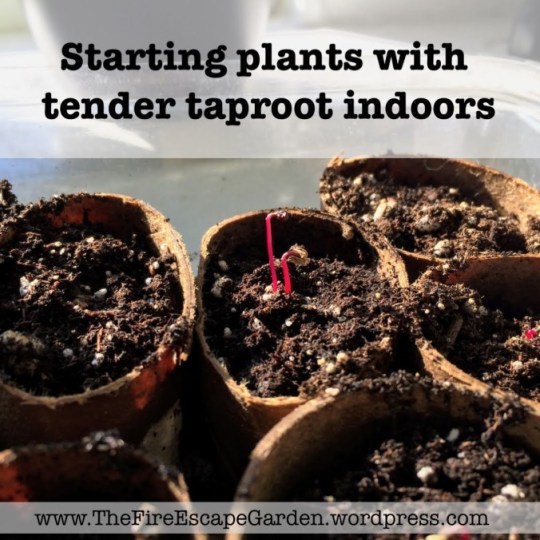
We’ve all seen that note on the seed pack: “starting indoors not recommended”. Oftentimes this is because the plants have tender taproots, which end up being damaged when transplanting. Seasoned gardeners (myself not included) manage to transplant those just fine – I guess, they have magic hands… The rest of us can just wait till it’s warm enough outside to direct-sow outdoors, or we can use…
View On WordPress
0 notes
Text
Some great weather and an unexpected weeding session
Some great weather and an unexpected weeding session

I’m afraid that I might jinx it by typing, but it looks like Spring may be on her way to Philly! The temperatures have been slowly climbing above freezing, so I am cautiously hopeful. This weekend I ventured into the community garden with the sole purpose of burying a batch of Bokashi-fermented kitchen scraps and delivering another batch of coffee groundscollected at work to the compost pile, but…
View On WordPress
0 notes
Text
My feeble attempts at seed organizing
My feeble attempts at seed organizing

For me, as for most gardeners, late winter is that time of the year: sifting through piles of seed packets, wondering if there are any more hiding somewhere in the house. This year I decided to come up with a unified system to organize and store all my seed – purchased and home-saved, and here it is.
Now, “system” is way too big a word to describe my approach, but I could not come up with a…
View On WordPress
0 notes
Text
Transplanting baby geraniums
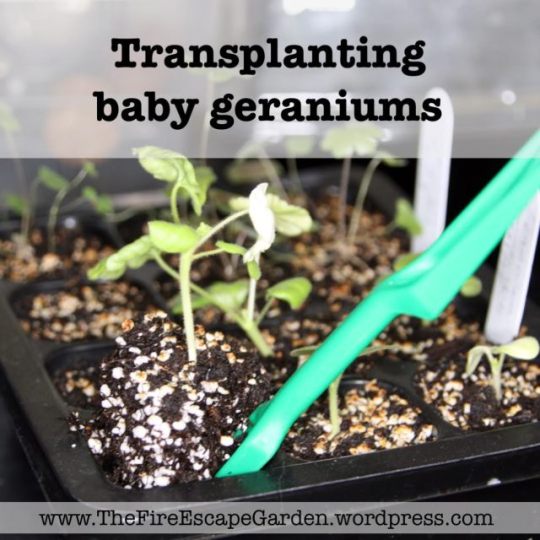
The geranium seedlings I’ve sown a month ago are growing up nicely, so I decided it’s time to transplant them. There are a few opposing opinions on when/if to transplant seedlings from sprouting trays to bigger pots. If these were peppers, tomatoes or pretty much anything I’ve grown so far, I’d keep growing them in the 12-packs until they are almost “jumping out” (roots will show up on the…
View On WordPress
0 notes
Text
My keyhole garden bed
My keyhole garden bed

Sometime over the winter I’ve stumbled over a post describing the approach known as “keyhole gardens”. You can find the details here, but in a nutshell, this is a practice of building self-sustainable garden beds (oftentimes circular) in small spaces. The sustainable part comes from a composting “tower” in the center of any keyhole garden. This is a sort of vertical approach to composting,…
View On WordPress
0 notes
Text
My take on Bokashi composting
My take on Bokashi composting

Chances are you’ve noticed by now that I’m very passionate about reducing food waste. I mean, come on, not only does organic matter sent to landfills emit copious amounts of methane (one of the greenhouse gasses), but it robs the agricultural sector of the cheapest (if not to say “free”), most effective and safe source of fertilizer ever! Furthermore, when a resident dumps food waste into trash,…
View On WordPress
0 notes
Text
Seed starting
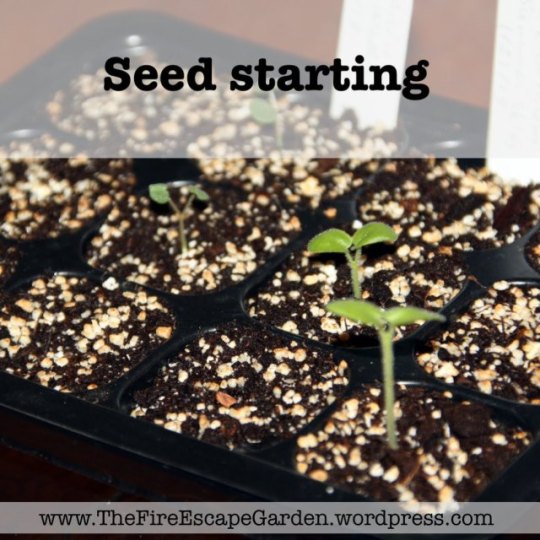
Hi there fellow gardening enthusiasts! It’s almost February, which means it’s time to start some seeds. If you, like me, have limited space under grow lights, planning is key when it comes to starting seeds. I came to conclusion that, at least in Philadelphia, many varieties can be direct-sown, even though traditionally they are started indoors. Cucumbers, for example, did great last year. I…
View On WordPress
0 notes